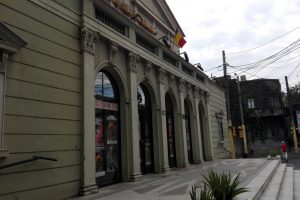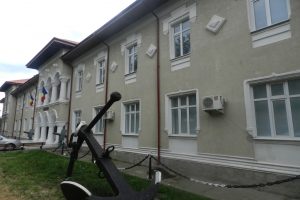

Situated in the heart of the Murfatlar vineyard, it was founded in the year 1970, under the patronage of the Museum of National History and Archeology from Constanța.
In the museum there are dozens of exhibits of remarkable value, which certify the practicing of wine culture on the Dobrogea territory for over 2000 years. Stopping on the times when the grapes where crushed with the feet in stone tanks in order to obtain the liqueur, we are reminded of the robustness of the Dacians, who used to drink the wine without mixing it with water.
Instead of the silver or golden cups, the Dacians used to serve the wine from wooden vessels, from big corns of deer or ass, which were passed from hand to hand.
Some historians believed the fact that planting the grapes in the area is prior to the first cereals, and the historical references to the proto-dacian and dacian wine were made also by Strabo and Diodor from Sicily.
The importance of the Thrace – Dacia vineyard area is also proved by the localization of the god Dionysos (Bachus at the Romans) in Thrace. Also, the proto-dacians had a similar god – Sabazios – who could have been taken from the Greeks and personified in Dionysos.
The grapes grown in the area were from the Vitis Silvestris type, the first “domesticated” one, at the very beginning of the Neozoic and is drank not mixed with water, after the Scythian habits, at least this is how the legendary Homer writes, who sustains the fact that the Greek warriors found wine in Thrace.
The poet Ovidiu – exiled by Augustus at Tomis, the current city of Constanța – writes the fact that the Getae knew how to also produce a type of brandy, concentrating the wine by freezing.
From the history known of the wine culture of the area is the measure of the Dacian king Burebista (82 b.Chr. – 44 b. Chr.) of clearing the vineyards. Maybe the Dacians were alcoholics; maybe he wanted to diminish the temptation of the neighbors of attacking constantly Dacia, known for its wine.
Anyway, Burebista’s measure was only a slight impediment in the development of wine culture, at the conquest of Dacia by Traian following the two wars; the production of the Dacian wines was in full expansion.
Then, the Romans minded coins also literally with the wine from Dacia, the coin Dacia Felix launched in the times of Traian, as well as another issuance from the period of the emperor Decius (with a little time before abandoning the province by the Romans), illustrating Dacia under the form of a woman who was carrying in her hands two children, one holding in his hand a bunch of grapes and the other one ears of wheat.
After the Aurelian retreat (271 – 275 A.D.), Dacia became the playground of most of the migrating people who were entering Europe, and it is believed the fact that the planting of the grapes has suffered, although it hasn’t disappeared.
There are information regarding the consumption of Moldavian wines at Constantinople, Warsaw or Vienna, while the production from Țara Românească was exported in Egypt and in the Roman Empire (which didn’t conquer yet Constantinople).





